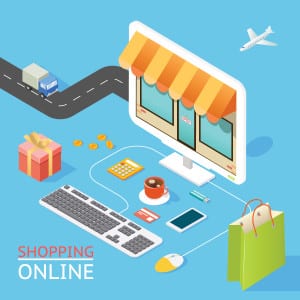As the ecommerce race heats up, ecommerce business website owners and digital strategists are coming up with newer, smarter and simpler ways of attracting and retaining their prized possessions i.e their customers. While the tried and tested strategies of reaching out through organic / inorganic campaigns on social media platforms and searches seem to work out well enough, there is a growing need to speak the language of the customer, when he speaks it and on the social platform that he speaks on. The logic being, he’ll like the brand more, so he’ll buy more too.
Enter Social Ecommerce.
Why social ecommerce has become so important?
Traditionally social media was always used as a means of boosting customer engagement, branding and prodding the customers to buy more of the brands products. However, it now appears that the dynamics have altered a bit and the focus has shifted to make the entire shopping experience more ‘incentive based’, with a much more personalised approach tailored specifically for him/her. Social media platforms are the ready medium for this, with astounding results for all to see.
Social buying and recommendations
When you ponder over it for a moment, you will realise that you have consciously/ unconsciously seen, recommended and been influenced by what your social circles have suggested. A very potent medium, data suggests that over 74% of consumers use social media as a means to update their social circles about their newest purchase. Not only that, over 90% of customers tend to depend on referrals/ suggestions given by their social friends rather than purchasing via advertisements (a mere 33% customers use/ buy through ads). The medium of social media has been highly powerful with an effective 200% increase in referrals, when you compare this years quarters data versus last years.
As is common knowledge, inorganic social media campaigns function on the basis of specific details of target customers such as demographic and psychographic parameters, user’s social browsing history- how much they browse and for how long they do so, favorites and so on.
The pivotal question for ecommerce websites remained as to how best to leverage this information to get customers to buy more. Social ecommerce has given some ready answers to this.
The incentive to buy
The basic premise of social ecommerce relies on the well-established fact that customers more often than not count on their friends and social acquaintances for recommendations, referrals and buying advice with the most preferred medium on social media platforms being Facebook, Pinterest, Twitter, Linkedin and Google+.
With the further introduction of the ’buy’ button on these social platforms, there was an added incentive for customers to buy then and there; without even leaving the page. What’s more, it’s been a win win for social platforms, as it meant added consumer engagement, and for the customer, as it meant a save on the credit card merchant transaction fee.
Raking in top dollar
It is widely being regarded that among the leading 500 etailers, an average of $3.3 billion was raked in via the medium of social shopping, according to the Internet Retailer’s Social Media 500.
Facebook leads the pack with a contribution of over 50% of social referrals and 64% of total social revenue and Pinterest and Twitter being the other active sites contributing to social revenues.
Leveraging the mobile and maximising social on this platform is one avenue that is keenly being watched and anticipated by digital marketers and ecommerce sites alike.










The information you’ve shared in this blog is remarkable. Thanks for sharing such quality information.
The post is absolutely fantastic! Lots of great information and inspiration both of which we all need! Also like to admire the time and effort you put into your blog.
The information you’ve shared in this blog is remarkable. Thanks for sharing such quality information.